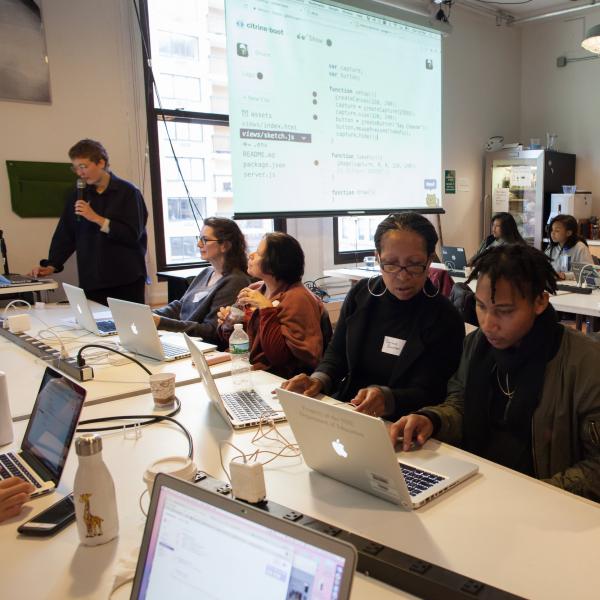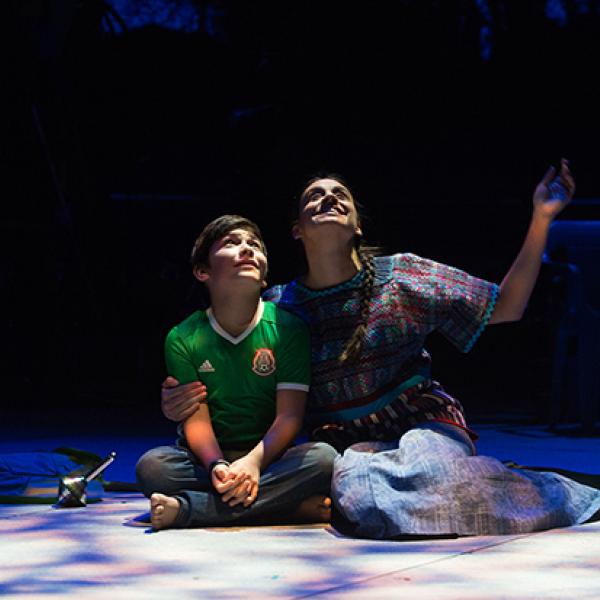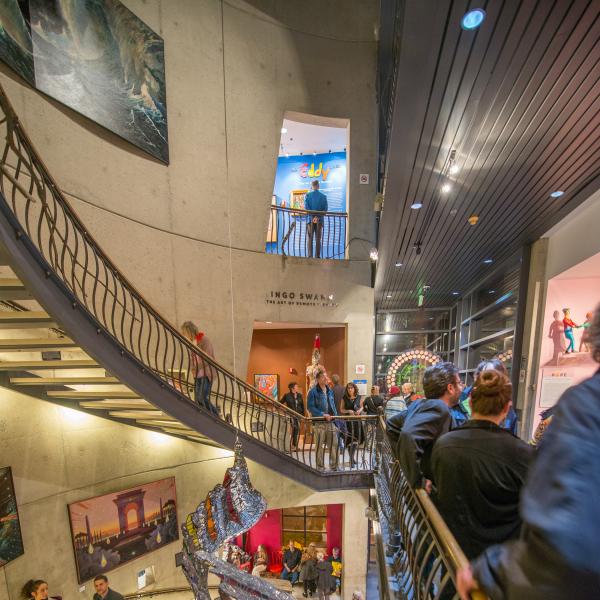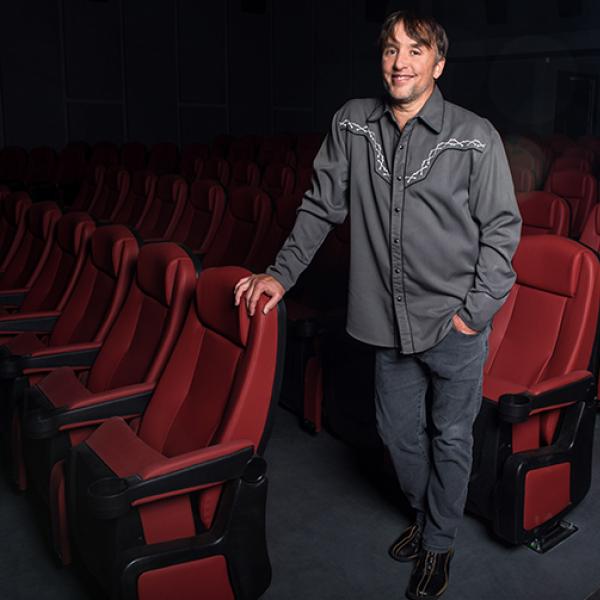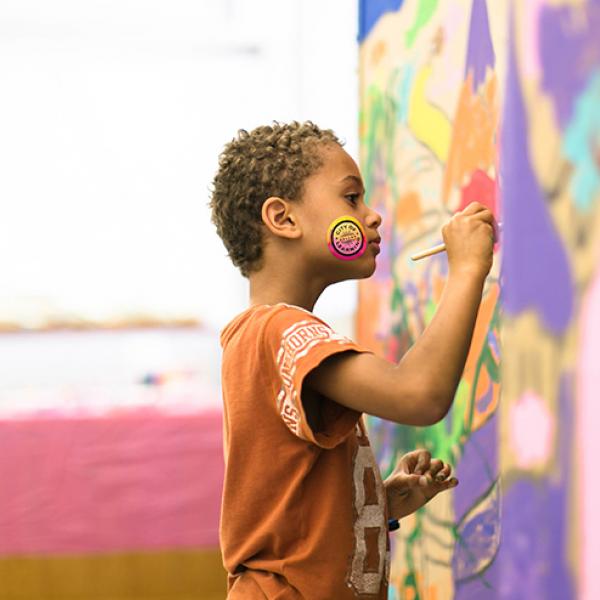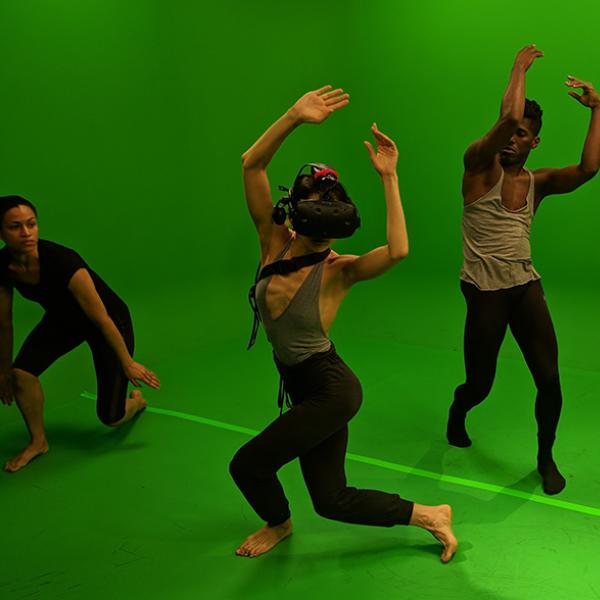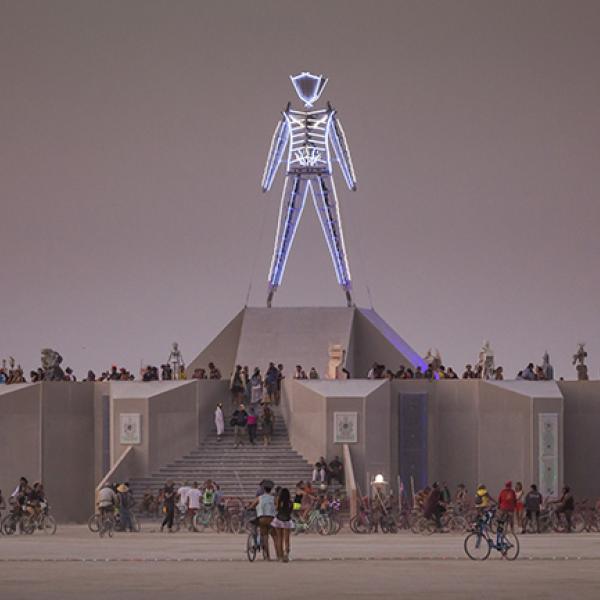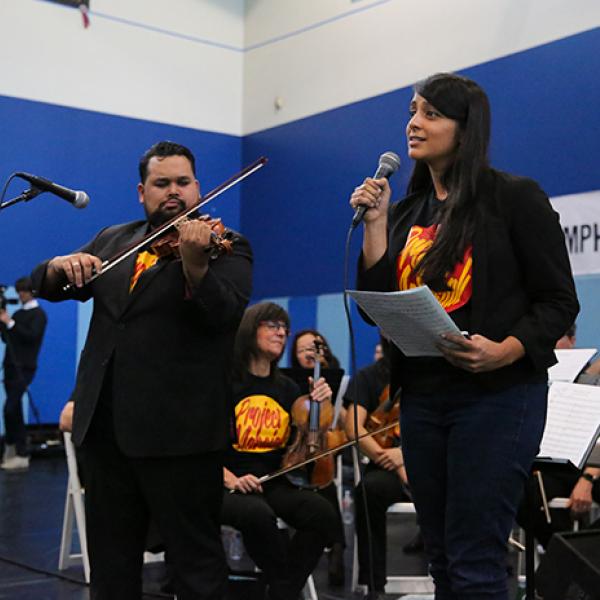The Sustainable Native Communities Collaborative
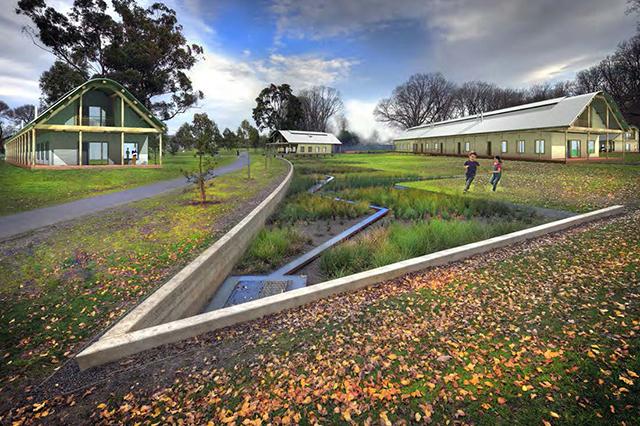
The Sustainable Native Communities Collaborative (SNCC) has been working in Indian Country since 2009, developing affordable, environmentally sustainable, and culturally responsive housing. A National Endowment for the Arts grantee, SNCC works holistically with the community in a collaborative process, believing that community members must be the architects of their own vision. What SNCC brings to the table is an architectural process—a process that responds to culture, place, and community. The bigger mission is to enable tribes to build their own sovereignty, and to strengthen their own communities.
SNCC Executive Director Joseph Kunkel grew up between Native American and white communities, which gave him a unique combination of education and experience that led him to social impact architecture. As head of SNCC, he has developed a visionary’s understanding of its practice and sees holistic collaboration at its core.
Music credit: “NY” composed and performed by Kosta T. from the album Soul Sand, used courtesy of the Free Music Archive.

Joseph Kunkel: If you grow up in a community that has access to public transportation, if you live in a community that has access to good art and good design and well-thought-out buildings, and good indoor air quality, the ability for you to prosper is that much higher, right? It’s kind of a no-brainer, when you really truly think about it. The whole environment in which we live is in some way informed by design and design thinking, and as architects, planners, designers, engineers, any one of the design professions, you're impacting one's environment, and to not give it a forethought or to not give it any thought is in some ways an atrocity to the communities that aren't accessing those good designs, or a good design method, or so on, and I think that's what this idea around social impact design, public interest design, what we're trying to kind of understand in a better and a holistic manner, is like how are we getting good designers into the field to the communities that need it the most?
Jo Reed: That is architect Joseph Kunkel he is the executive director of Sustainable Native Communities Collaborative—and this is NEA Arts Online, I’m Josephine Reed. One of the truly visionary design firms in the country is The Sustainable Native Communities Collaborative or SNCC. SNCC was begun in 2009 to help develop culturally and environmentally responsive housing design within American Indian communities. Working closely with the community, SNCC helps tribes reclaim their spaces by creating housing that is site specific, culturally appropriate and driven by the needs of the people who actually live there. The development and design of these projects is a participatory process with tribal communities. Building are designed to include technologies that align with the values expressed by tribal community members. And through studios, workshops and classes, SNCC is working to advance the field of tribal architecture, to create a generation of designers. Joseph Kunkel has been a part of SNCC since its inception. He was drawn early on to socially-minded architecture—marrying that western beaux arts education to the culturally specific needs in Indian Country and in so doing creating something entirely new. In many ways, this melding of traditions is a near perfect analogy for Kunkel’s own background
Joseph Kunkel: I grew up in Point Pleasant, New Jersey, a shore town in-- along the coast of New Jersey. My mom is from Montana, Southeastern Montana, from the Northern Cheyenne reservation, and I grew up kind of between the two places, both on the reservation and off the reservation. I think this idea of going back and forth between these two worlds and walking the fine line of living in these worlds was really defined who I was, between the white world and the Native world. Growing up, it was just normal. It was nothing-- you didn't know anything different. It wasn't really until college that you realize that maybe this wasn't a normal life. <laughs>
Jo Reed: But that life led him to architecture and social impact design.
Joseph Kunkel: During my graduate studies at University of Maryland, I knew that I wanted to kind of work in this social space, leveraging architecture and thinking about architecture for communities that don't necessarily have access to good design, and I started to realize that my own community, the Northern Cheyenne reservation, didn't have access to architects, to good design, to how to think about affordable housing in a creative way, and I basically started thinking about that during my thesis semester, or even before my thesis semester, to think about affordable housing on tribal lands. And so my whole graduate thesis focused on affordable housing for Native populations. And then moving on, I graduated from graduate school and ended up working in Bolivia for a semester or two with the International Design Clinic, focusing on indigenous populations and bringing in good design to their education system. Coming back I had the opportunity to apply for the Enterprise Rose Architectural Fellowship, a fellowship that really focuses young architectural professionals and teams that young architecture professional with an affordable housing developer, and in this case I was fortunate enough to be teamed up with the housing authority in New Mexico, the Santo Domingo Tribal Housing Authority, and so it was really at that point I started to kind of flex my knowledge of tribal housing with an affordable housing tribal developer.
Jo Reed: Joseph is quite clear about the many deep challenges that tribal communities face—but high on that list…
Joseph Kunkel: Access to affordable housing-- there's just an incredible lack of access to housing in general. Just the housing stock is not there. There's an immediate need of 200 thousand plus units of housing, and that is just not being satisfied. Financing, access to capital, access to private financing is lacking in Indian Country. Typically what tribes end up doing is leveraging or using their Indian Housing Block Grant, a grant that's allocated through the Department of Housing and Urban Development, Office of Native American Programs, and so that, in relationship with the Indian Community Development Block Grant and Title VI loans that HUD also provides has been the main source, main financial source, of providing financial capital to housing development. I think how we've started to think about housing development-- and not just design. Design is a component of the overall process, and it's a very important component of the process, but we need to kind of strategically think about how we're going to holistically think about development, from predevelopment, understanding capital, understanding ways in which we then can leverage that capital into physical building.
Jo Reed: SNCC takes a holistic approach to design—sustainable, culturally specific—it’s a way of working that looks at the entire picture
Joseph Kunkel: We firmly believe that it's a holistic process, and it really is about the culture and the community and the place. And so in some ways, we're always kind of going back to those three lines. Like, how are we-- are we responding to the community? Are we responding to the culture? And then yes, of course, all architecture should be responding to place, and I think those are-- that's incredibly important for us to be thinking about in all phases of design, development, even when we're thinking about financing. Can we afford that art studio in every one of the affordable housing units that we're developing? Should we be doing that? Or how should we be accessing public transportation in a rural context? Like just trying to understand how all that comes together.
Jo Reed: And at the heart of it all: Joseph and the SNCC team are designing with the community not for them—it’s a process.
Joseph Kunkel: We do firmly believe we're designing with. We believe that community members are their own architects of their own vision, and we bring a process-- we bring an architectural process. We're architectural professionals, planners, developers, designers-- but we firmly believe that they know their community better than we do. We're outsiders. But we have an outsiders' lens of thinking about indigenous methods of being, and I think that is probably the most important way of thinking about it. We want to help develop the vision from the ground up, rather than having to potentially respond to a vision that has already been maybe half-baked or not fully thought through. So often when a typical architecture firm applies to a project or responds to a request-- a proposal or request for a proposal-- the vision has already been written down. The client, the end-user, kind of knows what they want, and the architect is then responding to that proposal, that formal proposal, where a lot of the times, because communities don't know what they don't know, we help develop that vision from the ground up, offering those opportunities for things that might not have necessarily been thought through, if that makes sense.
Jo Reed: The Sustainable Native Communities Collaborative—which is a not for profit design firm-- has a clear point of view and multiple strategies for a new way of designing.
Joseph Kunkel: We're really focused on building the capacity of tribes to build their own sovereignty, to build their own communities. If we work ourselves out of a job, we're doing the right thing. And so we see ourselves as actual architects and planners working on the ground, designing buildings and designing pathways to sovereignty, but we're also looking at this body of work as research as well. How are we sharing this knowledge? How are we breaking down the silos and sharing these development methods with tribes across the country? So how are we as thought leaders trying to break down those silos, share knowledge, develop the knowledge, and then kind of give it back to the community? In some ways, we have an obligation to be doing that. In many ways, a lot of professionals have the obligation to build these communities up.
Jo Reed: He is achingly aware of the lack of opportunities faced by people and kids living in Indian Country.
Joseph Kunkel: In some ways too, the profession, the architectural profession, is not necessarily kind to people of color, and not necessarily that they don't want to be, but it's-- an architectural education, a design education isn't accessible, right? In Indian Country, you're not growing up and your father's not an architect. Your father is not a lawyer. Your mother isn't practicing medicine. And so the aspiration to become an architect isn't necessarily there, and the ability-- and for this ability to kind of be working in Indian Country as a Native is-- I wouldn't be doing anything else, in my mind. But to offer those opportunities and to share that knowledge with other Natives and other non-Natives is really important as well, and that's another kind of part of our mission, is thinking about how are we educating Natives and non-Natives to work in Indian Country.
Jo Reed: Joseph has written about melding Western design education with the culture of Indian Country and creating a new vision for sustainable and affordable housing.
Joseph Kunkel: All architecture education is coming from a Western European thought process, right? It's a Beaux Arts arts education, and that's not to say it's a bad education. I had an amazing graduate education, and I think trying to-- and that education is not going away any time soon, whether it's in the academy or within practice. But I think we have ways of structuring that education, to apply it into culturally specific contexts, and for instance, the work that we've done at the Santo Domingo Pueblo, from an urban design background. So being educated as an urban designer in school, and understanding how to read urban forms becomes really important, and then translating that to a cultural context like a pueblo, which is very much an urban form, and is a very dense development, but that wasn't necessarily historically informed by Western knowledge. It was the own tribe's way of being. And so as an outsider, to realize that and see that, and then try and think about, "Well, what is the next phase of development?", and how do you start to think about community and the cultural context that that is kind of nested in in those forms, and then design for the next generation of pueblo inhabitants and for that community.
Jo Reed: I asked Joseph if there was an aesthetic that was distinct to Indian Country.
Joseph Kunkel: I don't know if I'd particularly think about it as an aesthetic. I would think about it is how are we thinking about the use of materials and the ways in which we might historically think about ways to habitating and living. The instance of-- and I gave a lecture last night at George Washington University and we were talking about a teepee and the importance of the teepee and the hide cloth that wraps the teepee poles, and how that was an incredibly complex structure, protecting its inhabitants from the Northwest winds, and when it got really cold, you'd skirt the teepee, and in the hot summer months you'd take the wrapping off and it'd become this incredibly cool structure, shading you from the sun and protecting you from the elements, and for that to be an incredibly complex structure, it's how do you take that way of habitating and relate that to a contemporary architecture. It's like how are you using contemporary building materials to replicate place and to replicate climate, and how you're designing for and with that culture.
Jo Reed: And of course, there are challenges unique to holistic design
Joseph Kunkel: I mean, it's all in many ways very challenging, but I like to think about this as a holistic process, as a way-- we're not just designing housing; we're designing with the community, and when we think about community, housing isn't the only component that make a successful community. It's the ability to access healthcare; it's the ability to access schools; it's the ability to access public transportation and areas to develop one's economy, both kind of as a community and as an individual. So if you're working within a tribal community and, for instance, is the Santo Domingo Pueblo, 75 percent of the community members really rely on the arts as a main source of income, and so their ability to access public transportation or, in this case, the Rail Runner, which gives this rural community access to the Santa Fe and Albuquerque art markets, is huge. It's the ability to sell pottery, to sell jewelry, to sell their artwork, and to develop affordable housing along that public infrastructure is incredibly key. But then the ability to access education using that same rail line, that commuter rail line, to access University of New Mexico, or to access jobs, also becomes incredibly important. So what are the backbones that allow for that affordable housing development to be successful? And this is where public housing has failed in the past, is-- are these kind of components. You're only developing affordable housing, but today, you can't just build affordable housing. You need to have access to all those components that make a successful community.
Jo Reed: And another challenge is funding—and the National Endowment for the Arts is happy to have provided grants at critical moments in the development of SNCC’s projects
Joseph Kunkel: We were fortunate enough to get the Art Works grant to start to build the knowledge capacity within the Northwest. I think this is another for instance of how we bring-- we're bringing tribes together for a period of time to share knowledge, build knowledge, and understand the projects that are-- the potential projects that can come about by these collaborations. In some ways, because Indian Country is so large, across the United States, this is also an opportunity for us to better understand how we can leverage our resources and our knowledge to help support the Northwest tribes.
And the Santo Domingo project that we worked on, a 41-unit housing development, a 3000-square-foot community center, all started with the $100,000 Our Town grant, and that turned into a well over $10 million housing development that included philanthropy, private investment, and federal dollars. And so the access to those predevelopment grants, those thought leadership grants, allowed us the runway to think big and to be visionary, right? Not just build the three units per year. We aspired to build 60-plus units and then we came down to 41 units. But that was still much more than the housing authority could have ever thought they could build.
Jo Reed: I wondered how Joseph and SNCC defined success—what does a successful project look like?
Joseph Kunkel: We're still very young, but I think if there is early buy-in to the process, if we have tribal leadership buy-in and we have community support, it's successful from the get-go. If we are able to convince outside funders and outside grant-makers and philanthropy to support that work that we're doing, I think we're successful. I think-- a lot of the projects that we're working on are still kind of in a conceptual design mode, or design phase, but I think with the support of many of the organizations that are supporting us now and continued support of others, we'll kind of get down that path of becoming even more successful. I think success is just how you gauge it, and how you kind of work with that.
Jo Reed: Of course, that isn’t to say it is all smooth sailing—there are moments when the community has made Joseph and the designers rethink their assumptions.
Joseph Kunkel: There are definitely, I mean, gut-checks when you talk about preconceived notions. Of course there's always the ability to say—either you're moving too fast or you don't really understand the context in which you're working, and one for instance is we were working with a community, and us as architects, we were specifying a polished concrete floor, where in some tribal communities that might be looked at as, "Oh, you're giving us concrete floors because we can't afford tile," and so it's looked at as a, "Oh, because we're poor you're giving us concrete instead of finished tile, or a linoleum," where our perspective was, "This is in high-end condos and apartments in urban settings," and we just thought of it as that, just that. It was a high-end finish. And so at that point we needed to kind of readjust and rethink, "All right, we maybe need to ask the question, and maybe we have to change and specify something else."
Jo Reed: Joseph Kunkel and the designers at SNCC also hope that their methods and practices may help to change the way architects and designers in general think about their own work.
Joseph Kunkel: Well, it goes back to that instance of designing with community or designing with place in mind. I reckon back to a teepee encampment, or ways in which we would habitate urban form or create our own communities. That was a community's way of defining itself, and they had the sovereignty and they had the ability and the empowerment to design and plan their own communities. Today that's not necessarily true, right? You have a housing authority or you have outside entities telling more at-risk populations how to live and how to habitate. A lot of these methods that we're thinking about don't necessarily specifically apply to Indian Country only. I would say that if we're successful in implementing these methods in Indian Country, we could then implement these ways of thinking in urban settings, in rural settings, in non-Native communities, in communities around the world. I mean, we would ideally be educating how architects engage in socially-minded architecture. I think that is incredibly important to be thinking about. We can't just be designing for the 1 percent, or those that-- or pro bono. We need to figure out ways to start to think about designing for those that really, truly need design. The communities that we're working with are-- I don't know how to kind of quite put it, but the idea that they need design more than the 1 percent. This idea of good design is almost-- it's an atrocity that they don't have access to architects, engineers, or these professionals that allow them to live in a way that will prosper their lives.
Jo Reed: "Visionary" is a word that is thrown around a lot, but it’s clear to me that Joseph Kunkel and the designers at SNCC are visionaries in their work with communities in Indian Country… but I also wondered what the word visionary meant for Joseph Kunkel.
Joseph Kunkel: When I think about "visionary", I start to think about ways in which we would think about sovereignty or think about one's own being, or ways in which we're thinking about empowerment, education and access to education, and to have a design community that is Native-led-- I mean, I look at all 573 tribes having access to good housing and not having to worry about the crutch which is our Indian Housing Block Grant. I look at ways in which we're developing our own housing with our own funding and not having to rely on the federal government to build our housing for us. Not to say that they're necessarily doing a bad job, but I think when you think about a visionary statement and you think about leadership and you think about policy and access, those are the things that I really hope for and wish for and that we are trying to do-- in Indian Country.
Jo Reed: That was architect Joseph Kunkel—he’s executive director of the Sustainable Native Communities Collaborative you can find out more about them at sustainablenativecommunities.org. This has been NEA Arts online—check out more stories about some of the visionaries working in the arts at arts.gov. I’m Josephine Reed thanks for listening.


